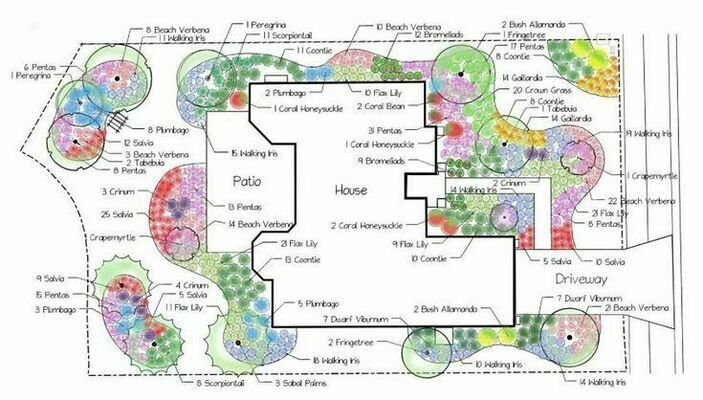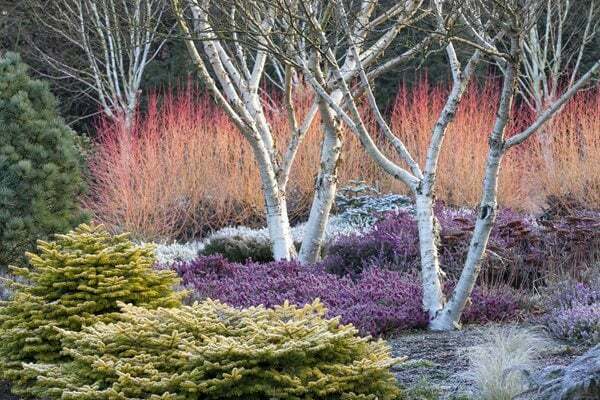Garden activities in the midst of winter
For many, it feels like winter will never end. You look out at your garden and see snow, ice or simply cold, wet, bare dirt. If such is the case, this might just be a great time to look at what aspects of a winter garden you could incorporate into your landscape to brighten it up a bit. How about colorful shrub bark, winter flowers or evergreen foliage? This is an excellent time to reflect on your past gardening successes (and failures) and note them in a gardening journal. While you may not be actively out-in-the-garden as often as you would care to be due to cold, rain or snow–or all three–you can still learn and practice in your mind as you read books and blogs, watch videos and attend seminars. This is the perfect time to get all your garden-related thoughts and new ideas in order.
Although it can be difficult to get out to the yard this month, the fact is there are still things you can do with plants in January and February. So, with plenty of time on your dirt-free hands, grab some paper and a pen and begin to make your to-do lists. As this particular column is being written in response to winter gardening questions received over the last few months, let’s jump around a bit and still get ahead of the game by preparing for when spring finally does jump out at you.
First and foremost, mid-winter is a good time to do some garden cleaning. The seasonal winds and rains, no doubt, left your trees bare, knocked down a few branches and caused dead leaves to pile up along fences and in various niches around the yard. Although you might need to wait for a dry day in between the stacked weather fronts coming in off the Pacific, now is the time to get out into the garden and clear the debris. Look for dead, broken or crossing branches on trees and year-round bushes. Cut back anything that looks like it is damaged or has the strong potential to become so. Assuming there will be more snow in our future this year, remember to get wet snow off branches and leaves. The weight can bend or break branches and entire trees. Other, nonessential, pruning can be done to shape trees and shrubs, to open up the canopy for more sunlight and air circulation and to promote better fruit production. With roses, consider waiting until late February to prune. You don’t want winter dieback to extend lower than your pruning cuts.
Talking about trees, I see way too many used and discarded Christmas trees on the side of the streets awaiting yard waste pick-up. This is really a waste of natural resources as there are many uses for these gone-by holiday displays in the garden. These trees can be put in the yard and strung with kiddo-manufactured garlands of things like popcorn, fruit, cranberries and pressed seed decorations that birds will enjoy and will create winter-time bird feeders that will provide you (and your cat) with visual interest and aerial antics.
Branches can be pruned from the tree trunk and placed under acid-loving plants, such as rhododendrons, camellias, blueberries, etc. and left until the needles fall off and become a natural mulch which can buffer the soil from cold and heat and, as they decay, slowly add needed acid fertilizer to the soil.
Finally, if you have the space, simply tossing the tree in the far back of the yard provides protection and habitat for your furry and feathered neighbors. Now, aren’t these better, more ecological, alternatives to recycle the money spent on the tree in the first place rather than paying the yard waste company to remove these hidden treasures?
Consider taking a few photos of your garden and use a pencil on the printed photos to redesign portions of your garden. Whether it’s fruits and vegetables or perennials and ornamental trees and shrubs, this quieter part of the gardening year gives you time to dream and envision new garden venues. You probably have some idea of what plants you want and where they should go. Put your thoughts on paper. If not, start doing your research now. Look at seed and plant catalogs. Check a horticulture book or two out from the library or buy your own and begin a gardening resource library. Getting a bit more technical here, some gardeners take pleasure in mapping out their entire garden space. Showing where there will be rows of peas, carrots and green beans; highlighting where the new red twig dogwood screen will go and where shade can be a friend or challenge for flower growing. Mapping now, for the garden’s high season displays, means not all your well-planned-out details will have been forgotten by April. Mapping beds should indicate the sizes of the mature plants in high season and notes of where plants will go, whether in the ground, raised beds or containers. You will have a better sense of what you want and where you can put it. Truth be told, mapping out a garden is not for everyone. Or at least, not every year. Once you have an established garden with growing beds in place, or perhaps you know the space by heart, there is less reason to plot every seed and starter plant intended to go in the ground.
This is also the time when ordered seed catalogs start to arrive. Consider your designs when looking through the various publications and deciding what you want. If the weather is forcing you to remain indoors, now’s the time to read-up on the plants, flowers, shrubs and trees you think you might want to add to the garden between now and June.
Indoor plants need your attention this time of year as well. Make sure they get enough light by moving them closer to a window or a brighter window (depending on the plant). It is a good time to clean leaves and remove dead ones. When watering, make sure the water is at room temperature before you use it on the plants. Also, indoor plants put away in places that don’t get much light and left in rooms that can get stuffy from the furnace constantly running should be moved, cleaned, pruned and watered.
Some indoor plants find this time of year particularly trying because insects infest them. Indoor plants can become susceptible to insects like spider mites, mealybugs, fungus gnats and scale. Keep an eye open for these pests and, if you got a new plant for the holidays, make sure no pests were transported in along with it. An all-seasons horticultural oil or Neem should take care of infestations.
These are just a few things you can do this month to stay horticulturally active, make sure that your garden comes to life once things warm and your indoor plants thrive. A beautiful garden and healthy indoor plants take work and planning, year-round. Staying active also helps to improve the mood of the gardener. There are many benefits from spending time in the garden or in the home and tending the plants during the warmer months. Don’t let the cold, wet weather keep you from enjoying plants now. Happy gardening all!
Contributing columnist Bruce Bennett is a WSU Master Gardener, lecturer and garden designer. If you have questions concerning this article, have a gardening question or two to ask concerning your landscape or want to suggest a topic for a future column, contact Bruce at gardenguy4u@gmail.com.
Please support The Woodinville Weekly by subscribing today!
 Loading...
Loading...






.png)
.png)
.png)

